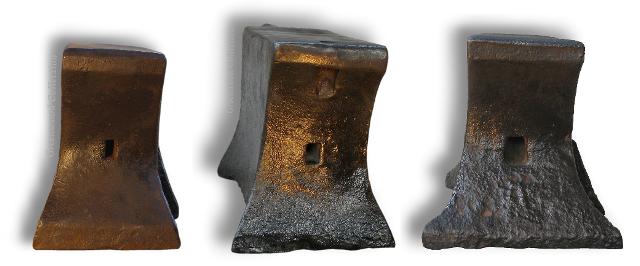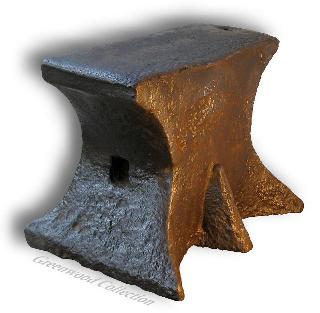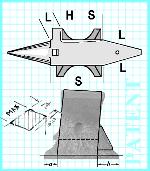There have been many theories about the purpose or lack thereof the fifth foot on English anvils.
Some have suggested it had some a religious reasoning (IE "church windows" on European anvils") or superstitious symbolism.
From the study on numerous examples as illustrated from the Greenwood Collection it becomes obvious that the fifth foot is an added brace on the side of the anvil where the heavier work was done by strikers.
Not only is there an added foot, the tilt of the anvil body requires feet twice as massive on the 5th foot side.


Foot width
b
is 1.3 times that of
a and the height ratio is roughly the same.
If this was seen on only one anvil you could write it off as an anomaly or bad craftsmanship.
But when you find it on more than one anvil from more than one manufacturer then there was definitely purpose to the slope of the face and body plus the supporting fifth foot.
There is no mythical nonsense here, this was purposeful engineering design.
Some fifth foot anvils lack the sloping face.
But the extra foot still braces the "away" or far side of the anvil where heavy work is done by both the smith and strikers.
Mystery solved!

5th feet of two "S" Brand Anvils in the Greenwood Collection.
Anvil photos from the
Greenwood Collection. Photographed by Josh Greenwood, digital production by Jock Dempsey






There have been many theories about the purpose or lack thereof the fifth foot on English anvils. Some have suggested it had some a religious reasoning (IE "church windows" on European anvils") or superstitious symbolism.
From the study on numerous examples as illustrated from the Greenwood Collection it becomes obvious that the fifth foot is an added brace on the side of the anvil where the heavier work was done by strikers. Not only is there an added foot, the tilt of the anvil body requires feet twice as massive on the 5th foot side.
Foot width b is 1.3 times that of a and the height ratio is roughly the same. If this was seen on only one anvil you could write it off as an anomaly or bad craftsmanship. But when you find it on more than one anvil from more than one manufacturer then there was definitely purpose to the slope of the face and body plus the supporting fifth foot. There is no mythical nonsense here, this was purposeful engineering design.
Some fifth foot anvils lack the sloping face. But the extra foot still braces the "away" or far side of the anvil where heavy work is done by both the smith and strikers.
Mystery solved!
5th feet of two "S" Brand Anvils in the Greenwood Collection.
Anvil photos from the Greenwood Collection. Photographed by Josh Greenwood, digital production by Jock Dempsey